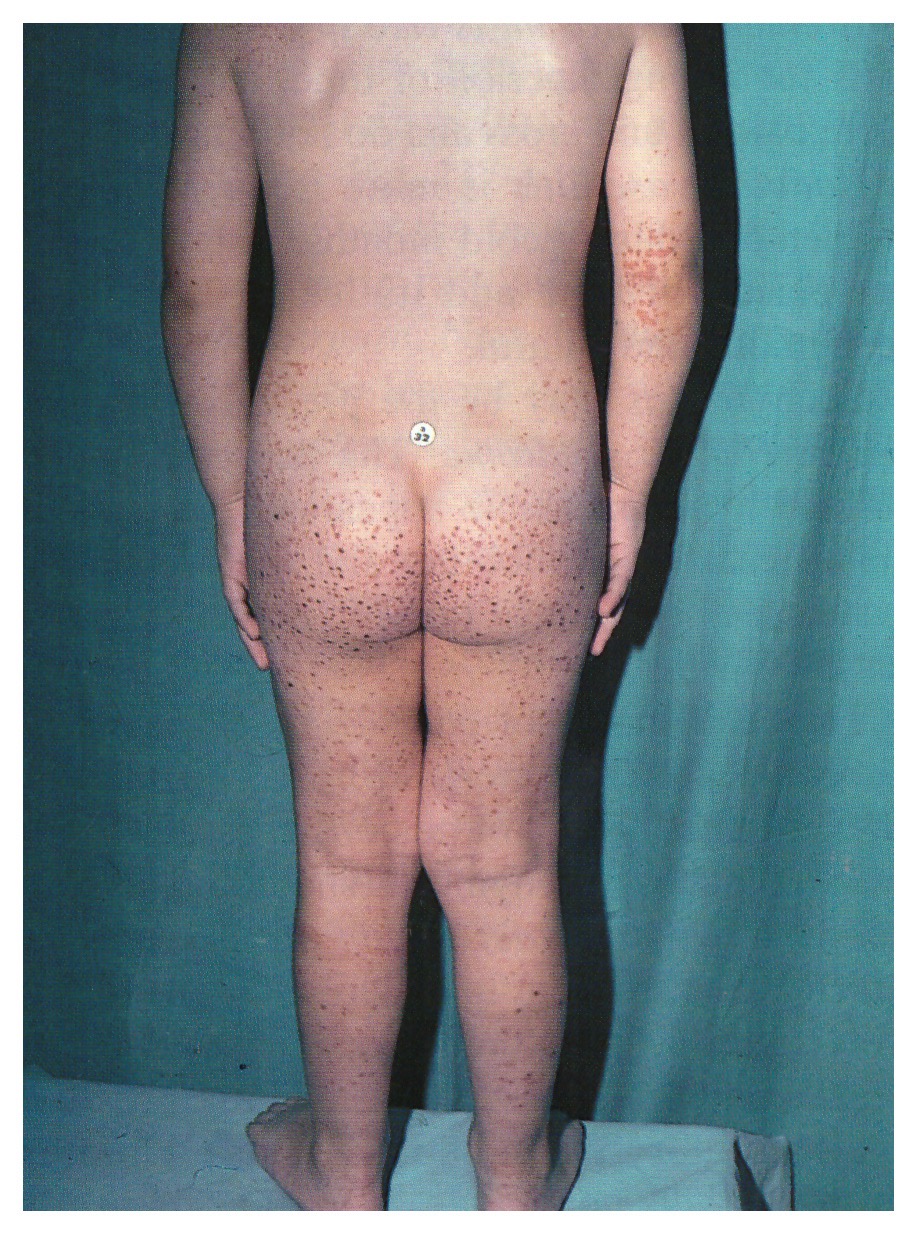Purpura -Telangiectases

Downloads
How to Cite
Abstract
Purpura is a blood red skin lesion. As a matter of fact, the discoloration is due to extravasation of red blood cells into the dermis. Pressure by finger fails to blanch the lesion, because of the presence of extravasated blood, which cannot therefore flow in the blood vessel net. This way purpura can be differentiated from erythema, which is also blood red colored, but blanches with finger pressure, because it is only caused by vasodilatation. Purpura is therefore an arrival point, to which one can arrive through very much different pathogenetic mechanisms, because the factors that contribute to keep the vessel wall intact and to prevent the extravasation of red blood cells are very much different, namely pressure, vessel, platelet and coagulation factors. As compared with adults, factors related to chronically increased venous pressure of the legs, which is very frequent in adult women, lack in children. Moreover, in the first two years even factors due to orthostatism lack. On the other hand, in the first two years an increased venous pressure of the head is much more frequent due to the higher frequency of crying at this age. One cannot always identify and separate the various histopathogenetic factors. This is why a classification of purpura is based parily on pathogenesis. Moreover, the inflammation of capillaries may be so intense to destroy tissues, leading to hemorrhagic blisters and blackish crusts (necrotizing capillaritis). (...).
